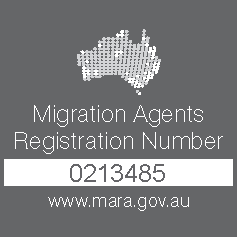How are new laws introduced in Australia?
There has been plenty of news recently about proposed changes to Australian migration laws. While radical changes always attract plenty of media attention, it’s important to remember that there are many reasons why a proposed bill may never see the light of day.
Here at Visa Solutions Australia, we are constantly reminding people not to panic when they learn about proposed changes. The announcement just a few months ago about changes to the Assurance of Support for Parent Family Visas may not come into effect if there is a change of government.
Meanwhile, the Skilling Australians Fund which was announced in March 2017 has still yet to pass Royal Assent meaning it’s still not law, so the training charge is not yet applicable.
We always advise our clients to contact us if in doubt about the status of any planned legislation.
Here’s a quick guide as to how a bill is proposed and becomes law in Australia.
Proposed bills may never make it through Parliament
If there should be a change of government, then even if a bill has had an initial reading, it may well be thrown out.
Lobbyists and campaigners can also place pressure on politicians to try to block proposed bills.
We always tell our clients that planned legislation is not always set in stone. You may be surprised to learn that 200 bills are introduced every year, but not all of them become law and it can take months for a proposed bill to pass the Australian Parliament.
How are laws made?
The Commonwealth Constitution gives the Commonwealth Parliament of Australia the power to makes laws in certain areas, the main ones being defence and immigration as well as telegraphic services.
Bills relating to migration are often proposed to parliament. They can be put forward by a minister, or a member of parliament or even specific bodies like the Australian Law Reform Commission. Parliaments in Australia are divided into two states, a lower and an upper house, except for the State of Queensland where it has only one.
What happens to a proposed bill?
A member who wishes to propose the new law or legislative amendment introduces the bill to the lower house, also known as the House of Representatives. The bill must be read three times in front of the house. In the second reading, it will be outlined in greater detail and after its third reading a vote will take place.
Once the bill is passed by the house in which it was introduced, it moves to the upper house, also known as the House of Senate for consideration.
Here the bill goes through the three reading stages again. If the bill originates in the lower house and is amended by the upper house, the amendments then must be sent back to them for consideration. If the lower house does not agree to the amendments, then the bill can be referred to the upper house where the amendments can be reconsidered.
Royal Assent
Once the bill has been passed by both houses, it is presented to the State Governor or the Governor-General (for the Commonwealth) who will assent to make this law and it will then be given the Queen’s seal of approval or Royal Assent. Once the bill has been sent to the Governor it is usually a formality that it be approved.
If you need any expert advice on all aspects of migration, speak to one of the VSA team today. It’s a complex subject so you’d be advised to talk to someone in the know.
Call us today on +618 9328 2664 or National Toll free 1800 828 008
We are in the business of solutions, no problem too big or too small.
Contact Us







